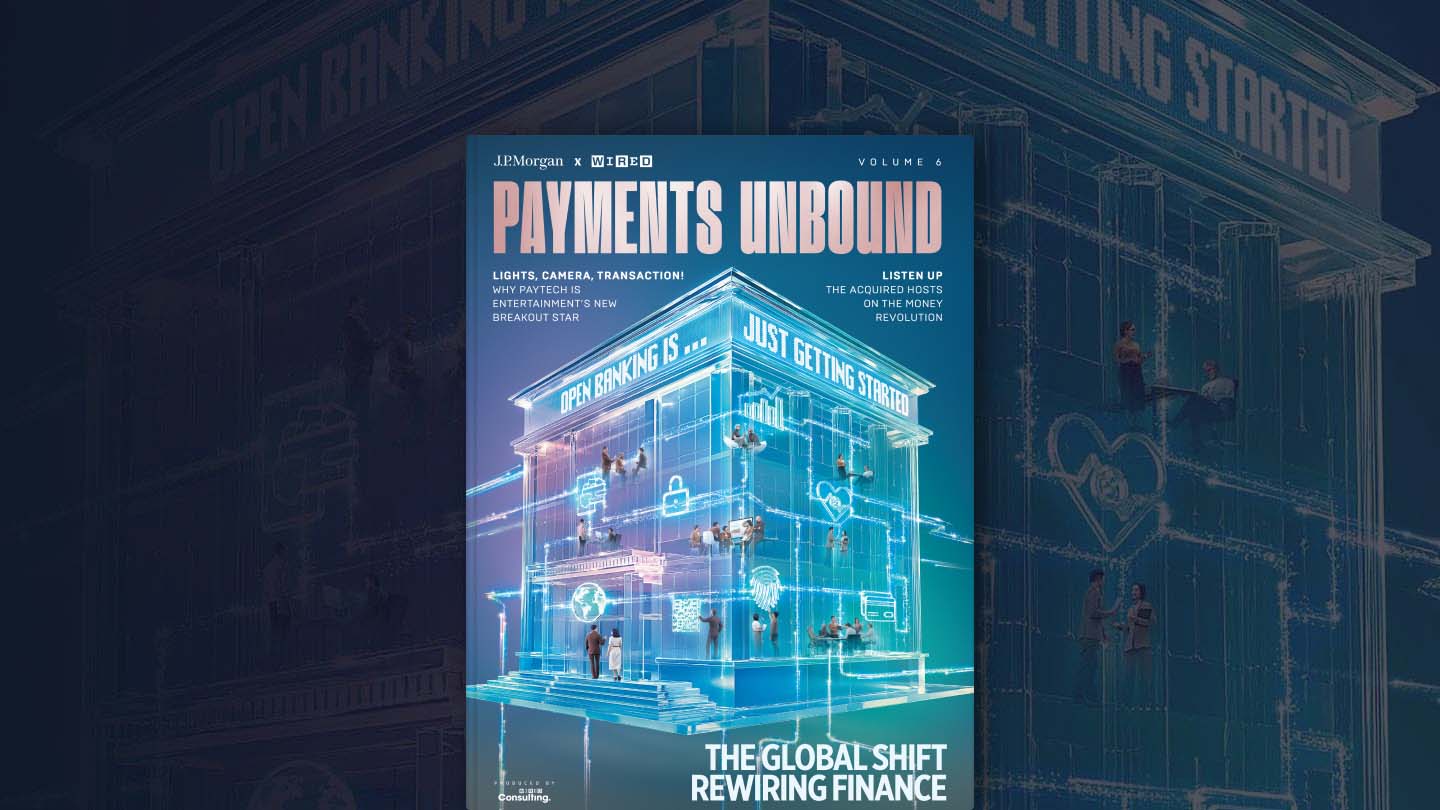From startups to legacy brands, you're making your mark. We're here to help.
-
Innovation Economy
Fueling the success of early-stage startups, venture-backed and high-growth companies.
-
Midsize Businesses
Keep your company growing with custom banking solutions for middle market businesses and specialized industries.
-
Large Corporations
Innovative banking solutions tailored to corporations and specialized industries.
-
Commercial Real Estate
Capitalize on opportunities and prepare for challenges throughout the real estate cycle.
-
Impact Banking & Advisory
When our communities succeed, we all succeed. Local businesses, organizations and community institutions need capital, expertise and connections to thrive.
-
International Banking
Power your business' global growth and operations at every stage.
Key Links
Prepare for future growth with customized loan services, succession planning and capital for business equipment.
-
Asset Based Lending
Enhance your liquidity and gain the flexibility to capitalize on growth opportunities.
-
Equipment Financing
Maximize working capital with flexible equipment and technology financing.
-
Trade & Working Capital
Experience our market-leading supply chain finance solutions that help buyers and suppliers meet their working capital, risk mitigation and cash flow objectives.
-
Syndicated Financing
Leverage customized loan syndication services from a dedicated resource.
-
Commercial Real Estate
Capitalize on opportunities and prepare for challenges throughout the real estate cycle.
-
Employee Stock Ownership Plans
Plan for your business’s future—and your employees’ futures too—with objective advice and financing.
Key Links
Serving the world's largest corporate clients and institutional investors, we support the entire investment cycle with market-leading research, analytics, execution and investor services.
-
Institutional Investors
Putting your long-tenured investment teams on the line to earn the trust of institutional investors.
-
Markets
Direct access to market leading liquidity harnessed through world-class research, tools, data and analytics.
-
Prime Services
Helping hedge funds, asset managers and institutional investors meet the demands of a rapidly evolving market.
-
Global Research
Leveraging cutting-edge technology and innovative tools to bring clients industry-leading analysis and investment advice.
-
Securities Services Solutions
Helping institutional investors, traditional and alternative asset and fund managers, broker dealers and equity issuers meet the demands of changing markets.
Key Links
Providing investment banking solutions, including mergers and acquisitions, capital raising and risk management, for a broad range of corporations, institutions and governments.
-
Center for Carbon Transition
J.P. Morgan’s center of excellence that provides clients the data and firmwide expertise needed to navigate the challenges of transitioning to a low-carbon future.
-
Corporate Finance Advisory
Corporate Finance Advisory (“CFA”) is a global, multi-disciplinary solutions team specializing in structured M&A and capital markets. Learn more.
-
Development Finance Institution
Financing opportunities with anticipated development impact in emerging economies.
-
Sustainable Solutions
Offering ESG-related advisory and coordinating the firm's EMEA coverage of clients in emerging green economy sectors.
-
Mergers and Acquisitions
Bespoke M&A solutions on a global scale.
-
Capital Markets
Holistic coverage across capital markets.
Your partner for commerce, receivables, cross-currency, working capital, blockchain, liquidity and more.
Key Links
A uniquely elevated private banking experience shaped around you.
-
Banking
We have extensive personal and business banking resources that are fine-tuned to your specific needs.
-
Investing
We deliver tailored investing guidance and access to unique investment opportunities from world-class specialists.
-
Lending
We take a strategic approach to lending, working with you to craft the right financing solutions matched to your goals.
-
Planning
No matter where you are in your life, or how complex your needs might be, we’re ready to provide a tailored approach to helping your reach your goals.
Whether you want to invest on your own or work with an advisor to design a personalized investment strategy, we have opportunities for every investor.
-
Invest on your own
Unlimited $0 commission-free online stock, ETF and options trades with access to powerful tools to research, trade and manage your investments.
-
Work with our advisors
When you work with our advisors, you'll get a personalized financial strategy and investment portfolio built around your unique goals-backed by our industry-leading expertise.
-
Expertise for Substantial Wealth
Our Wealth Advisors & Wealth Partners leverage their experience and robust firm resources to deliver highly-personalized, comprehensive solutions across Banking, Lending, Investing, and Wealth Planning.
Explore a variety of insights.
Key Links
Insights by Topic
Explore a variety of insights organized by different topics.
Key Links
Insights by Type
Explore a variety of insights organized by different types of content and media.
Key Links
We aim to be the most respected financial services firm in the world, serving corporations and individuals in more than 100 countries.
Key Links
- Insights
- Payments
- Payments Optimization
- Why investors are taking notice of healthcare capitation models

By Bret Schiller
Head of Healthcare, Corporate Client Banking & Specialized Industries, J.P. Morgan Commercial Banking
By Bret Schiller
Although fee-for-service (FFS) is the most common payment model in healthcare, payers, providers and investors are increasingly interested in capitation.
Skyrocketing healthcare costs have helped fuel the interest in capitation as investors look for innovative ways to provide services more efficiently. At the same time, valuations for capitated physician groups have soared. In many instances, these groups trade on revenue multiples—a measure of a company’s value based on its net sales or gross revenue—that are often seen for tech company valuations.
Interest is also rising because investors now have more options to enter the capitated sector. For years, one large, private company was the only major player in the market. Now, there are two publicly traded capitated physician companies, and more are expected to enter the space.
If you’re considering capitation—whether as a physician, hospital administrator or investor—here are several key factors to keep in mind.
How Capitation Works
In a capitated arrangement, the physician receives a set monthly payment for each patient. If the cost of care exceeds the contracted monthly payment amount, the physician is typically responsible for the overage. If the cost of care is below the monthly capitation payment, the physician typically keeps the difference.
FFS vs. Capitation
In an FFS system, providers are paid for every service they perform. This can create an uncertain revenue stream because the number of patients they see and services they provide can vary widely from month to month. With payments tied to services, FFS systems create an incentive for providers to order more procedures—driving up healthcare costs across the board.
In capitation, providers receive a flat monthly fee for every patient enrolled, regardless of the cost of treatment or whether a patient receives care. These consistent payments give providers more financial certainty, which makes it easier to budget and control costs. Patients also benefit because capitated systems have built-in health metrics, with an emphasis on preventive care.
For example, if you treat a chronic disease now with inexpensive medication and regular check-ups, you may avoid a costly hospital stay down the road. Because hospital fees can cut into profit margins, capitated physician groups have a greater incentive to make sure their patients stay healthy and out of the emergency room.
The end result? A well-run capitated practice could provide better care at lower costs.
Going Beyond Medicare Advantage
Americans 65 and older account for the vast majority of U.S. healthcare dollars spent. But compared with other high-income countries, the U.S. is getting less bang for its healthcare buck.
The U.S. consistently ranks among the lowest in healthcare outcomes and efficiency. According to The Commonwealth Fund, which used data from the Organisation for Economic Co-operation (OECD), the U.S. spends the most on healthcare as a share of its economy—but has the lowest life expectancy among peer nations.
Capitation provides a chance to improve outcomes and rein in costs, particularly for primary care practices that treat many Medicare Advantage patients. Physician groups focused on Medicare Advantage patients make up the bulk of capitated practices and are expected to see the largest growth in capitation in the future.
Capitation can work for other types of practices as well. Some primary care groups have implemented capitated payments for Medicaid patients, while a few specialists have successfully moved to a capitated payment model.
Looking Ahead
If personal habits are hard to break, business habits are even harder. And that’s one of the biggest challenges of moving physician groups to a capitated system: Many doctors have only worked in an FFS environment.
For investors, it may make more sense to focus on practices that already use capitation. There’s no need to educate physicians on how to work in the system, and the potential payoffs could come quicker.
Investors may also begin to eye groups with younger physicians who may not be as attached to an FFS model and have fewer old habits to break. These doctors may be looking 10, 20 or 30 years down the road and suspect the current FFS system is not the future of healthcare. Their outlook aligns well with forward-thinking investors.
Assessing and Managing Risk
Success in capitation comes down to risk assessment and management. A properly assessed patient population and well-managed capitated system may provide a higher reward for physicians, hospital systems and outside investors. A poorly assessed and ill-managed system, however, may result in costly overruns and substandard health outcomes.
With such high risk-reward levels, it’s crucial that you understand all the complexities of capitation. At J.P. Morgan, we’ve been working with capitated physician groups for years, and we led the recent IPOs of two publicly traded capitated physician companies. We have experience in the sector, and we can help providers and investors navigate capitation financing and banking challenges.
© 2021 JPMorgan Chase & Co. All rights reserved. JPMorgan Chase Bank, N.A. Member FDIC. Visit jpmorgan.com/cb-disclaimer for disclosures and disclaimers related to this content.
Related insights

Payments
Fintech partnership and operational strategy guide
Oct 24, 2025
Download our e-book to better understand fintech challenges through institutional banking expertise and strategic frameworks.

Payments
Driving advanced cross-currency payments for financial institutions
Oct 23, 2025
Rethink the way you do cross-border business with Xpedite, an innovative global solution from J.P. Morgan Payments.

Payments
Managing operational complexity in digital commerce
Oct 23, 2025
Learn how unified payment solutions reduce costs, prevent fraud and create seamless customer experiences that drive loyalty.

Payments
Oct 20, 2025
The future of payments is being written in code. As technology and finance become ever more intertwined, the builders creating the fast, frictionless and secure technologies powering payments are taking center stage. Explore the world they’re building in Volume 6 of Payments Unbound.

Payments
Global wires payments formatting requirements guide
Your guide to making cross-currency payments.

Payments
Cross-border liquidity optimizes global cash consolidation in Saudi Arabia
Sep 24, 2025
J.P. Morgan Payments provides solutions to help streamline cross-border payment systems, facilitate international trade and enable liquidity optimization opportunities across Saudi Arabia.

Payments
Almarai centralizes cross-border payments for competitive advantage using J.P. Morgan Payments
Sep 23, 2025
Learn how food and beverage manufacturing and distribution company Almarai modernized and streamlined payment processing with J.P. Morgan Payments.

Payments
2025 AFP® Digital Payments Survey: A roadmap for today’s businesses
With the notable shift to digital payments in full force, the timing has never been better for the latest edition of the 2025 AFP Digital Payments Survey: A Triennial Publication. Conducted by the Association for Financial Professionals® (AFP) and sponsored by J.P. Morgan, this year’s edition dives into the data regarding B2B payment trends, cross-border payments and their advantages, as well as the challenges for today’s marketplace.
You're now leaving J.P. Morgan
J.P. Morgan’s website and/or mobile terms, privacy and security policies don’t apply to the site or app you're about to visit. Please review its terms, privacy and security policies to see how they apply to you. J.P. Morgan isn’t responsible for (and doesn’t provide) any products, services or content at this third-party site or app, except for products and services that explicitly carry the J.P. Morgan name.